The 2021 F1 championship is experiencing a great mediatic contradiction, a distorted narrative that does not picture the situation accurately. It is believed, in fact, that the technical development of the cars and engines was substantially halted. This is partly true because the rules, in the year preceding the great revolution of 2022, allow limited changes. But the possibility to make adjustments is still there. If a team of specialists encounter a loophole, it is certain that they will try to take advantage of it. This is what is happening in the fight between Mercedes and Red Bull which, while not bringing sensational news to each race, are refining their cars with “micro updates”, whose effect is perceivable on performance.
The results of this technical competition can be observed above all on the power unit. It is on the turbo-hybrid engines that Honda and Mercedes-AMG High Performance Powertrains are chasing and outdoing each other. Until Paul Ricard, the feeling was that the two V6s were on the same level of performance. But then Honda made a significant leap and, almost suddenly, imposed itself especially on the top speed, which has always been a strength of Mercedes. According to our estimates, the specification introduced in France by the Japanese engineers guaranteed a power surplus of 15 horsepower. A monstrous figure if we consider that no developments are allowed except those that meet the need to resolve reliability issues.
It seems that the Japanese engineers were rather cautious with the first spec, and then, after testing it on track, they added more power as their second step. The experts in Sakura worked on the hybrid part and on the turbocharger, to make available to the customer teams this additional share of horsepower which immediately reverberated on the performances in France and in the Austrian one-two.
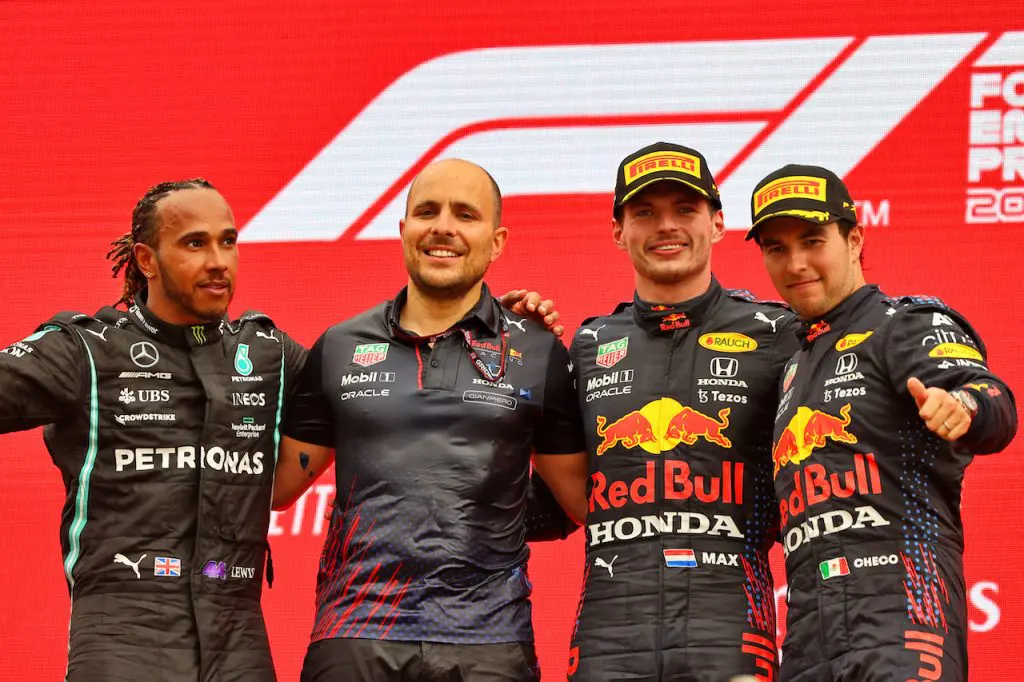
The performance of the Japanese power unit did not go unnoticed enough to trigger, according to some, the FIA to issue a technical directive that would have more or less directly clipped the wings of the engine mounted on the Red Bull and AlphaTauri. This hypothesis has not found confirmation either from the engineers or from the international federation. So, if the performance of the Honda power unit remains constant, something must have happened that justifies their overtake on Mercedes. It is in Brixworth that they probably found a way to unlock more potential. How did they do it?
In order to get a better understanding of it, we need to take more than one step back. The 2021 power unit of the Black Arrows has undergone a major work of remodeling on the conformation of the “plenum camera”, that area in which the pressure wave collides inside the manifold following the closure of the intake valve and which subsequently rebounds again towards the combustion chamber. This phenomenon helps the intake system to introduce more air. Which, in turn, enriches the blend by generating a supercharging effect. In the intentions of the equipe led by Hywel Thomas, the new plenum camera was the expedient that would guarantee greater efficiency to the engine.
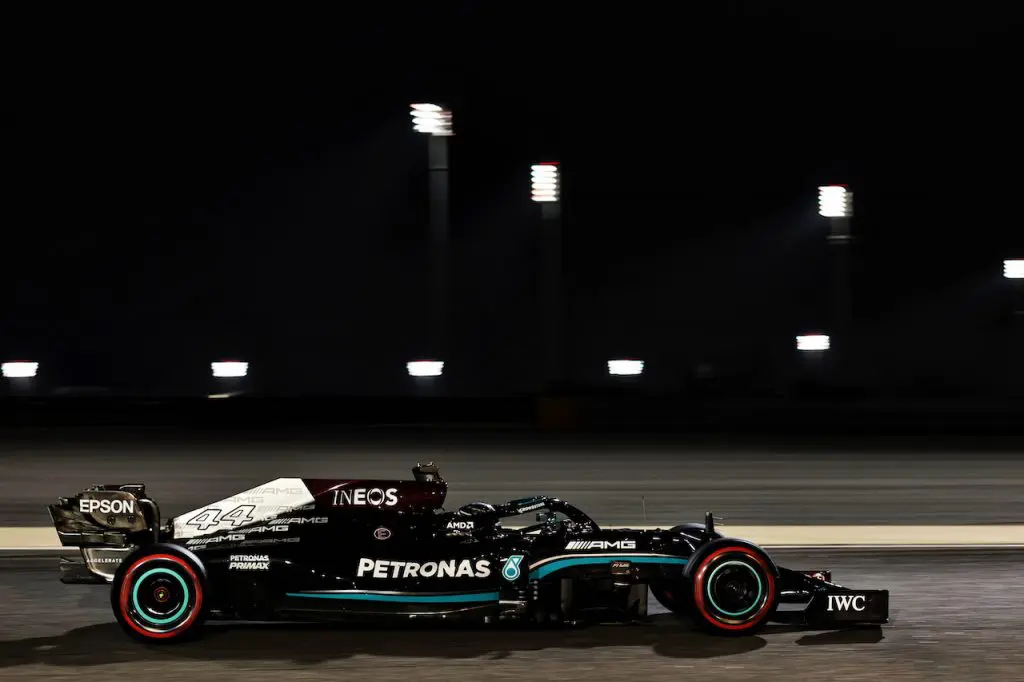
But something, in the first phase of the championship, did not go as they expected at Brixworth. Observing the on boards of Hamilton and Bottas, since Bahrain, an anomalous behavior of the Anglo-German engine on the straights was noticed. Basically, their V6 was clipping. According to technical regulations, the power unit can use the MGU-K electric unit by spending no more than 4 MJ of energy per lap. Considering that the maximum power that the standards allow for the MGU-K is 120 kW (160CV), we can estimate that the use at maximum power of the electrical component is about 33 seconds per lap. Obviously each team has different electronic calibrations to distribute these 4MJ or 33s when it is most needed.
Referring to the F1 GP that opened the season, we observed that clipping occurred both at the end of the main straight and in the following one. The electronics, in a nutshell, would cut the power of the MGU-K electric motor to avoid using it all and to be able, therefore, to exploit more in the following lap. In short, in the last few meters of the straight section, despite the driver still remaining with his foot flat on the gas pedal, the electric unit stopped delivering power to save energy.
Although this phenomenon has been observed on other engines, it is the first time that it has manifested itself on the Mercedes one. We had seen, through Hamilton’s on-boards, that clipping was also evident in the race, which caused a loss of speed both on the main straight and in the second extension where the second DRS zone was located.
This lack of electricity was initially believed to be due to problems with the ERS system, but it is not. According to the information retrieved by Formula Uno Analisi Tecnica, the lack of electricity is mainly due to the internal combustion engine. Basically, the new plenum was not giving the desired results. Which did not allow to take advantage of the endothermic at 100% (click here to read all the details). This factor obviously also had repercussions on the electrical system, since it is able to recover a smaller amount of energy than that foreseen in the simulations.
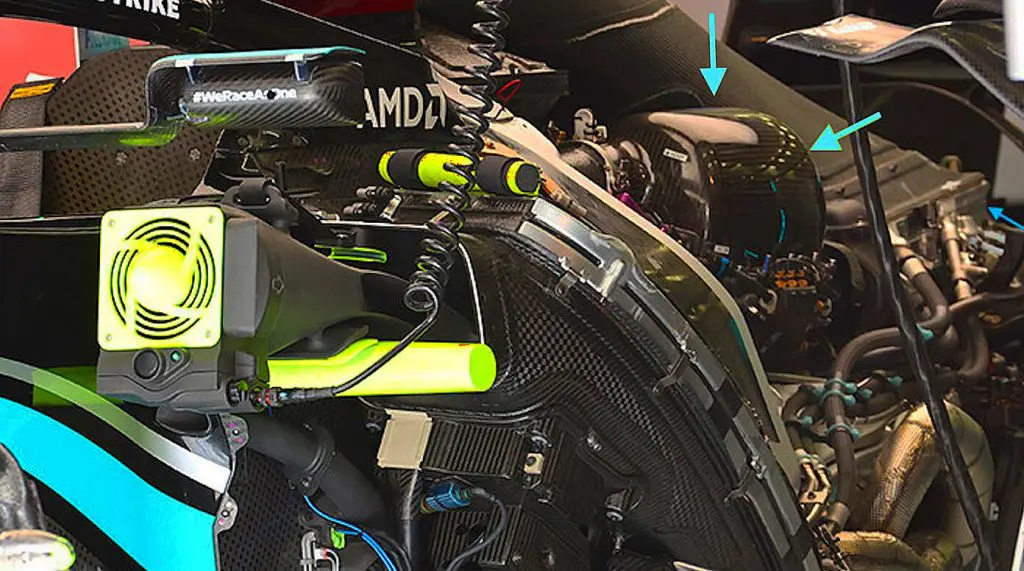
We are using the past tense because, evidently, in Brixworth they solved the puzzle. Mercedes AMG F1 could cool the plenum camera at certain stages to have more power available, which is allowed when the car is not moving, when we see the mechanics apply dry ice near the air vents of the power unit. The situation is different during qualifying or during the race, given that the rule provides for the prohibition of refrigerating the air that enters the manifold of the power unit. In Red Bull someone has subtly raised the suspicion that Brackely’s team is “playing” in a gray area of the regulations given the performance increases observed right at the Copse, when Hamilton arrived like a fury behind Verstappen.
In AMG they say that the difference in speed is explained by the fact that the Honda PU, at that time, was being recharged. This observation is also refutable. And we did it with an exclusive telemetry analysis that showed how Verstappen’s Red Bull, in its approach to Copse, was even going two km / h faster than in qualifying (leggi qui l’analisi). In short, the Honda V6 was not in the electric charging phase. So it is clear that Mercedes had a few more horsepower to exploit in particular circumstances and at specific moments of the GP.
We give you proof of this based on an observation we made by examining Lewis Hamilton’s on board relating to the Hungarian F1 GP (clicca qui per l’analisi completa sul britannico). During the first stint of the race, when the car no.44 had to recover from the last position it had ended up in due to the strategists’ error of judgment, Peter Bonnington, the British driver’s track engineer, gave some very interesting indications. He suggests HPP-7, a more powerful hybrid mapping communicated to the driver by adding “For more performance”.
At the pit wall, in that phase of the race, they still believed that victory was possible. So much so that another indication will come on the setting of the power unit. Bono, in fact, commanded to set the endothermic on STRAT 4, a very aggressive setting of the endothermic. The command was repeated immediately after the second stop, when Lewis needed more power to close the gap with the train of cars in front of him and that divide him from the podium.
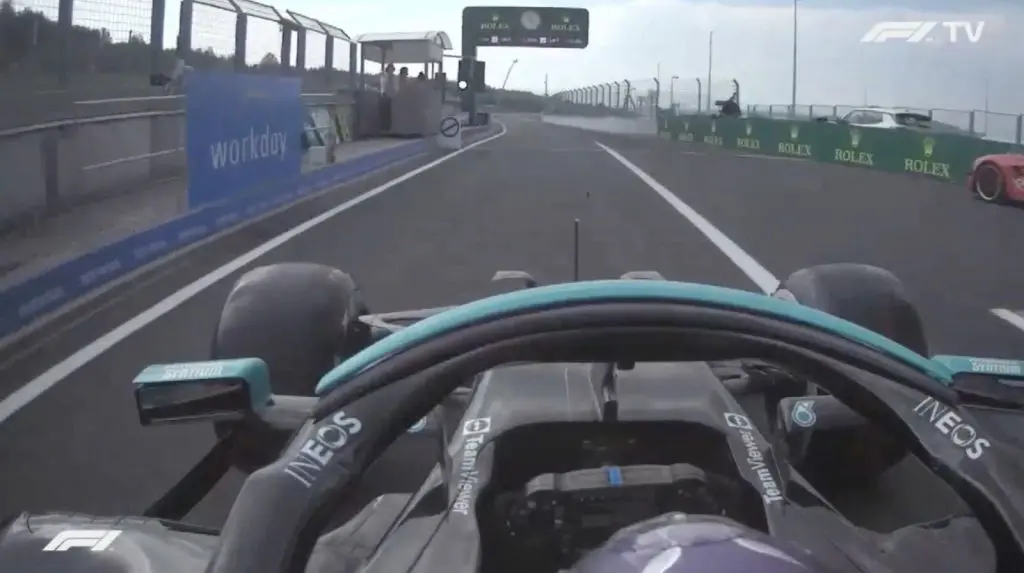
What is the new bit here? By constantly analyzing the on board of both cars, it emerged that the most thorough mapping of the endothermic component used during all the races so far disputed was STRAT 5. This setting was used in F1 from the Bahrain GP to the British GP. In Hungary, for the first time, Mercedes was able to count on extra power in at least three key moments of the race: in the final phase of the first stint, out of the pits after the second stop and in the hot moments of the duel with Fernando Alonso. This is proven proof that theMercedes’s powertrain now has more power than it used in previous races.
It is the tip of the iceberg represented by the work done in the factory to solve the problems at the plenum we talked about at the beginning of the season. Again, overcoming these difficulties has allowed, again in Hungary, to be more aggressive even with the electrical part which must not be considered as a foreign body, but as a combined element that benefits from the greater effectiveness of the “traditional” section. of the power unit. If Bonnington imposes the hybrid setting on HPP-7 by adding “For more performance” on the radio it is also because now their V6 has reached a higher degree of reliability that allows more strong uses.
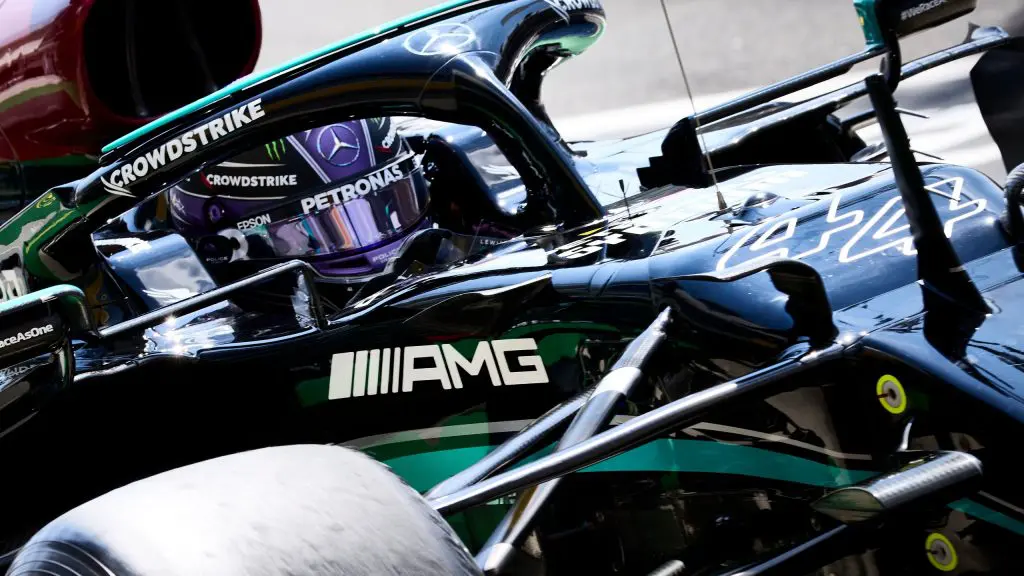
The hidden performance war in F1 between Mercedes and Honda is therefore continuing. For Belgium or Monza, the Brixworth powertrains department should come up with the third and last seasonal specification that could have some further news on the elements we have focused on in this article. With a subsequent increase in horsepower not yet estimated. The situation is different for Honda which is forced to revise its programs due to the Verstappen engine problems caused by the Silverstone incident and that of Perez which, after the carnage at the start of the Hungarian GP caused by Valtteri Bottas, will need to be replaced.
This is a significant disadvantage in the normal annual rotation which, probably, will force Red Bull to use at least a fourth engine with a grid penalty. At this point the technical inertia of the championship seems to be favouring Mercedes again. But be careful: it would be foolish to think that the Milton Keynes-based team and Honda are unable to react. With twelve more dates on the calendar, every scenario is possible.
Autore: Diego Catalano – @diegocat1977
Translation by: Beatrice Zamuner – @ZamunerB
Photo: Mercedes – F1TV – Nicolas Carpentiers

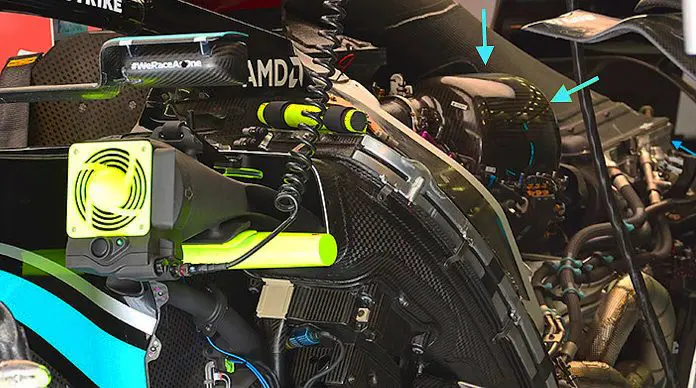
Keep this going please, great job! https://Casinoslotsgames5.wordpress.com/
At this time I am ready to do my breakfast, after having my breakfast coming over again to read other news.